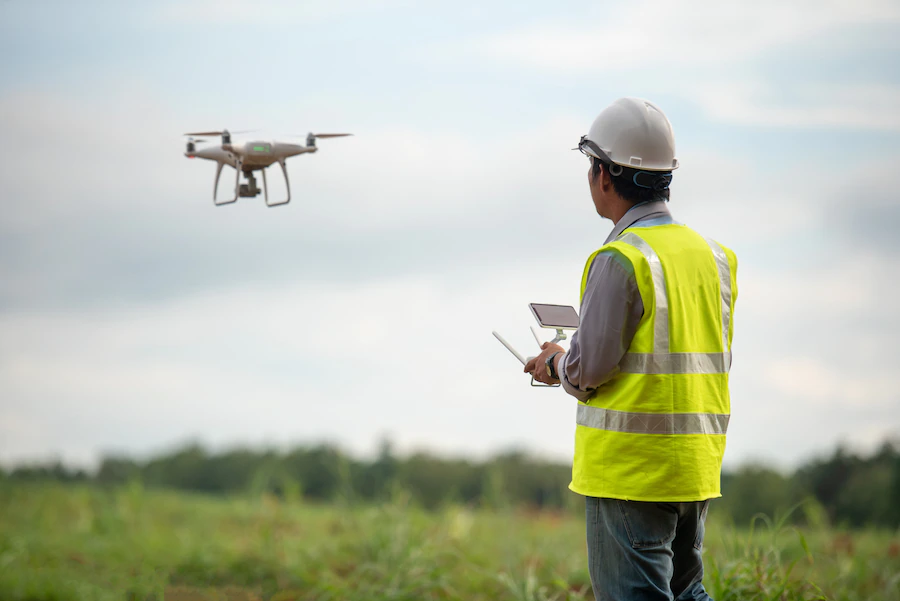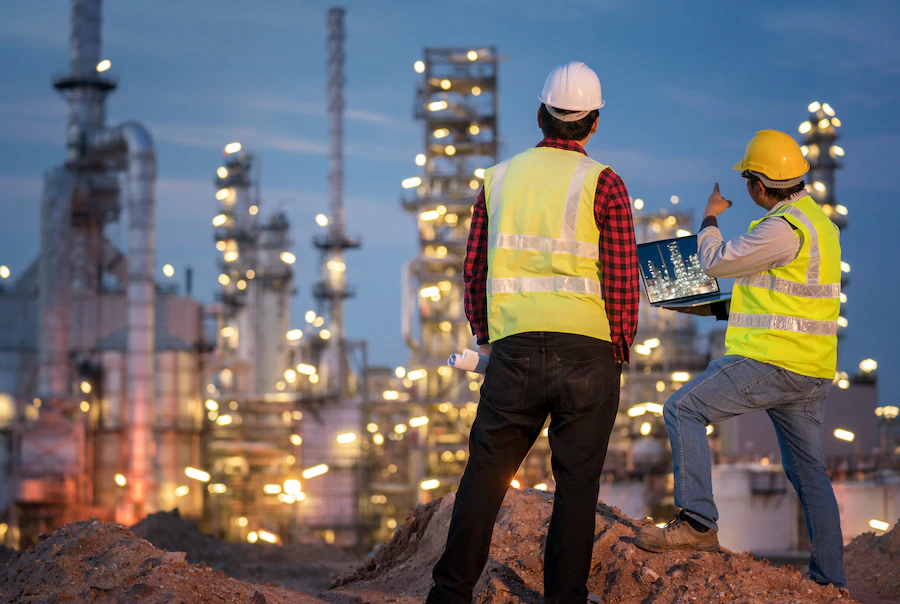Construction sites are inherently dangerous settings, no matter how hard construction companies try to keep their workers safe. Heavy gear and equipment, power tools, a good deal of personnel, and buildings all represent life-threatening obstacles that construction site workers and stakeholders must address in order to improve construction safety.
Leadership in a range of sectors has leveraged technical breakthroughs to promote safety in their respective professions as technology continues to progress at a rapid rate. Construction has been sluggish to incorporate safety technologies into their everyday operations, but that is changing.
Fortunately, several technology advancements in construction safety have resulted in enhanced incident response and overall construction site safety. Following are some ways modern technology is improving safety in construction sites.
1. Monitoring, Inspection, and Maintenance

Photo Courtesy: Freepik
Unmanned aerial vehicles (UAVs), often known as drones, have a range of useful uses for construction organizations. These include several methods to increase safety.
Drones may be used to continuously and comprehensively monitor building sites. Project managers profit from this, since it allows them to ensure that the project is being built according to plan. It also makes work locations safer by allowing potentially risky circumstances to be identified and remedied before a catastrophic accident occurs.
It may also survey vast construction projects. Drones take overhead images of complete construction projects, which may then be evaluated to ensure that the site is safe and free of hazardous materials, conditions, or constructions.
Further, drones can inspect structures on construction sites for scheduled maintenance. This is beneficial for maintenance on enormous buildings like skyscrapers and bridges wherein maintenance is hazardous to construction workers.
2. Prevention Through Design Software
In construction and many other sectors, software can make this easier. We may use PtD software with other modern technology, such as drones and wearables in the construction sector, guaranteeing the safety of building sites.
General contractors and architects may tackle safety issues with advanced modeling tools before they become a reality. From the beginning of a building project, software makes it simple to reduce worker danger.
RELATED: Digital Construction Management: Technology and Benefits
3. Safety Training
Virtual reality simulators have been used to train pilots and surgeons for many years, and we might use them in the same manner to train construction site employees on everything from operating cranes and excavators to masonry work and wielding.
Workers in the construction sector may experience hazardous conditions, such as confined spaces or working at greater heights in a controlled environment. The usage of virtual reality in the construction sector will reduce the number of accidents that occur during training sessions while eliminating the anxiety of operating large construction machines and equipment.
4. Hazard Tracking

Photo Courtesy: Freepik
Architects and planners may engage in real time with contractors and clients, changing designs and processes at every level. This implies that they may superimpose data and pictures into actual areas, allowing for the sharing of construction information and a considerable decrease in project hazards.
Augmented reality is very beneficial for flagging risks in complex project locations. This technology also helps managers pinpoint all the construction schedule’s most difficult and risky moments. Both augmented reality and virtual reality are likely to be used in the future to scan physical buildings against plans, reducing risks, and improving overall construction quality.
5. Reducing Body Strain

Photo Courtesy: Freepik
For industrial application, exoskeletons and power-assist suits are being developed so that employees may lift and carry goods or use heavy equipment for extended periods of time without placing their bodies under undue stress.
The purpose of unpowered gadgets is to decrease tiredness and damage while maintaining appropriate posture. To make lifting and hauling simpler, these gadgets use counterweights or shift loads to stronger muscles.
Certain construction businesses have used sensors and motors to aid employees in decreasing back strain and allowing them to move large things.
RELATED: How Technology Is Transforming the Construction Industry
6. Predict the future with data
Imagine being able to predict the future using historical safety data. To anticipate the likelihood and severity of an occurrence, you may consider factors like current worker experience, site circumstances, equipment used, and project size. This amazing insight allows you to put preventive measures in place, ensuring the safety of your employees.
It is becoming simpler to analyze patterns, search for connections, and spot viable concerns as more construction companies adopt digital technologies to collect safety data. At the University of Colorado, for example, 24 researchers analyzed roughly 5,300 injury claims from 470 contractors, totaling millions of labor hours. They were able to forecast the damage and body part affected in construction accidents using 80 input factors.
Subscribe now to see more content like this in the future!
CITATIONS:
- Branthonne, D. (2021, May 11). 5 ways technology is improving safety on construction sites. Novade. Retrieved May 18, 2022, from https://www.novade.net/5-ways-tech-can-improve-safety-construction/
- Jones, K. (2017, April 26). How Technology is Improving Construction Site Safety. ConstructConnect. Retrieved May 18, 2022, from https://www.constructconnect.com/blog/how-technology-is-improving-construction-sites-safety









